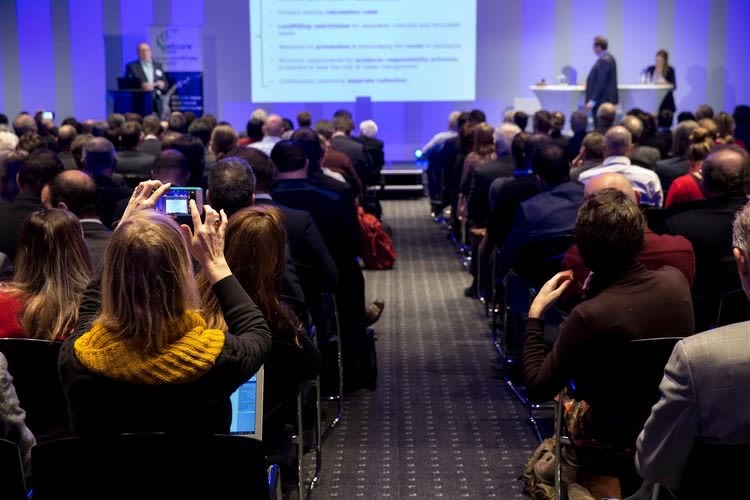Day 2 - European Circular Economy / Trends in PET Collection, Recycling and Sustainability
European Circular Economy and PlasticsThe second conference day started exactly like the first ended: with a conference room full of representatives from the PET value chain - ready for the morning session about the European Circular Economy. Eline Boon from the Ellen MacArthur Foundation presented the "new plastics economy". According to Eline there is "a global momentum to rethink the plastics system". However, it is not about "doing without plastics, but differently": "We need a new plastics economy where packaging never turns into waste."
One highlight of this year's conference was the presentation of the EU Plastics Strategy by Eric Liégoise from the European Commission - DG GROW, who emphasised that there is finally a concrete strategy for plastics in the circular economy on the table: "Our plan should bring not only economical but also social and environmental growth while boosting the competitiveness of Europe's plastics industry." The presentation stressed the fact that an industrial commitment to use more recycled plastics as well as global action is essential. After explaining the strategy worked out by the EC in detail, Eric Liégoise took the time to thank Petcore Europe for its voluntary commitment to 65% recycling and reuse of PET packaging material collected by 2030.
Trends and Solutions in PET Collection and Recycling
After a clarifying round of Q&A, the focus of the conference shifted to trends and solutions in the PET post-consumer collection. First, Gian de Belder from Procter & Gamble presented the Holy Grail project on markers and digital watermarks. Gian also gave an interesting overview of the five pillars for a circular economy: design for recycling, access to collection, participation/education, separation and product innovation. Gian was followed by Clarissa Morawski from Reloop, who compared deposit versus non-deposit collection. Even though there are still many issues with post consumer waste collection, Clarissa sees a positive development: "I have seen more activities from the industry and governments in the past year than in the 20 years before that." The last presentation of the collection focused session was held by Carlos de los Llanos and Vincent Colard from CITEO and focused on the development of opaque PET bottles and PET thermoforms collection in France.
To introduce the topic of PET post-consumer collection, Antonio Furfari from PRE proceeded with his presentation on design for recycling. Antonino presented RecyClass, an online tool that ranks the recyclability of a plastic package, as well as the European PET Bottle Platform (EPBP) providing design guidelines for recyclability.
After Antonino's introduction Francois Lagrue, plant manager at Wellman gave an overview of the state of the art in the collection, sorting and recycling technologies of PET thermoforms. Even though the recyclers face certain problems in this area Francois is more than positive about the future: "The PET bottle recycling is a success story, but it did not happen in a finger snap. It needed some time, as it will still need some time for the thermoforms. If the entire value chain works together we will have another success story around the PET." DuPont, for example, is already working on solutions to increase the recyclability of PET thermoforms. Heiko Schenck presented the challenges the company and industry is facing, and more importantly, possible solutions to overcome these challenges. Full body sleeves on PET bottles represent another challenge for recyclers. An Vossen gave an interesting overview of the current situation and presented a possible solution: easily removable labels as well as end-consumer education and engagement.



